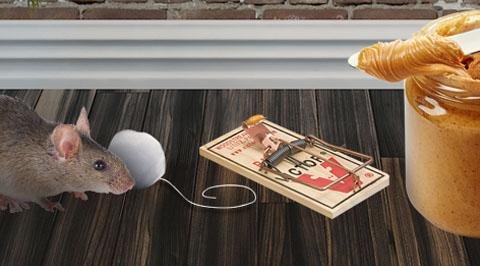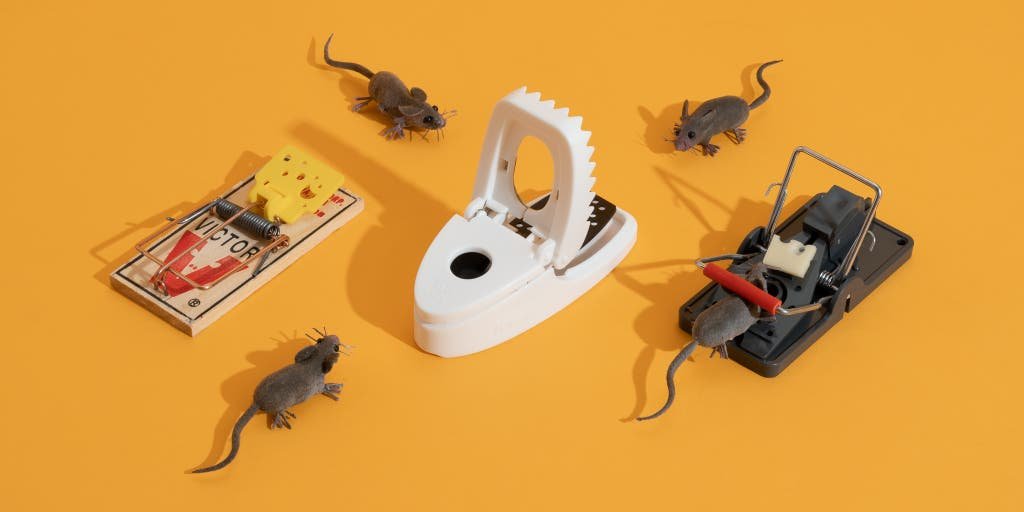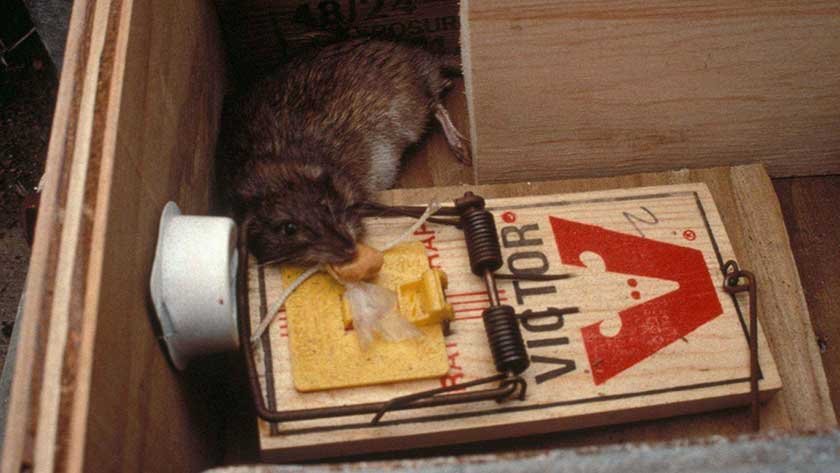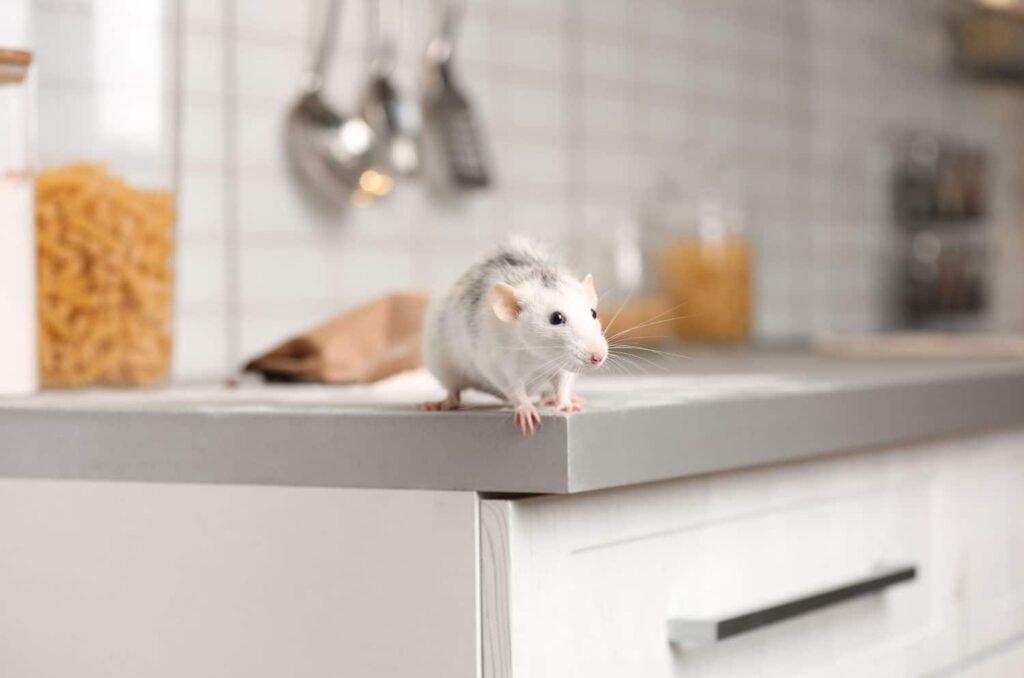In “Rats’ Favorite Food for Trap: A Comprehensive Guide to Baiting Strategies,” you will discover valuable insights into the world of trapping rats. Whether you’re dealing with a small infestation or looking to prevent one, this article will provide you with a range of baiting strategies to effectively lure rats into traps. With tips on identifying rats’ favorite foods and how to use them to your advantage, this guide is your key to successfully dealing with these unwanted pests.


Understanding Rat Behavior
Rats are intelligent creatures with complex behaviors. In order to effectively trap them, it’s important to understand their behaviors and preferences. By learning about their sense of smell and factors that affect their food preferences, you can tailor your baiting strategies for maximum effectiveness.
Common Rat Behaviors
Rats are nocturnal creatures that are highly adaptive and resourceful. They have a strong urge to explore their surroundings, which often leads them into our homes and businesses. Rats are known to be cautious and wary of new objects or changes in their environment. Understanding these behaviors can help you anticipate their movements and set traps accordingly.
Rat’s Sense of Smell
Rats have an exceptional sense of smell, which is their primary method of navigating and identifying potential food sources. They can detect odors from long distances and are attracted to strong, pungent scents. This is why baiting traps with highly fragrant substances can be effective in luring them in.
Factors Affecting Food Preferences
Like humans, rats have specific food preferences. However, their preferences can be influenced by various factors. Rats are omnivores, but they have a particular fondness for high-calorie foods such as nuts, seeds, grains, fruits, and fats. Factors such as availability, seasonality, and the presence of other food sources can also affect their choices. It’s important to consider these factors when selecting bait for your traps.
Choosing the Right Bait
Choosing the right bait is crucial for successful trapping. By considering general considerations, the effectiveness of different baits, how to avoid bait shyness, and the preferences based on rat species, you can increase your chances of successfully attracting rats to your traps.
General Considerations
When selecting bait, you should aim for options that are highly appealing to rats. High-calorie foods such as peanut butter, chocolate, and cheese are popular options. It’s important to choose baits that are easy to work with and can be securely placed in traps. Additionally, selecting baits that have a strong odor can also help attract rats, as their sense of smell is highly sensitive.
Effectiveness of Different Baits
Different baits have varying degrees of effectiveness in attracting rats. Options such as peanut butter and oatmeal have been proven to be highly effective due to their appealing scent and taste. Chocolate and Nutella are also popular choices, as rats are attracted to the sweetness. Bacon and cheese are enticing to rats due to their strong odor. Experimenting with different baits can help you determine which ones work best for your specific rat infestation.
Avoiding Bait Shyness
Bait shyness occurs when rats become wary of traps or baits that have caused them harm in the past. To avoid this, it’s important to use fresh bait each time you set a trap. Rotating baits and using a variety of options can prevent them from associating a specific food with danger. Additionally, avoiding overloading traps with bait can also help prevent bait shyness.
Preferences Based on Rat Species
Different rat species may have varying preferences when it comes to food. Norway rats, for example, have a preference for meats, while roof rats are more attracted to cereals and fruits. Understanding the species you are dealing with can help you choose the most effective bait for your specific situation.
Trapping Techniques
Trapping techniques are essential for successfully capturing rats. By understanding the different types of traps, proper placement and positioning, and selecting the best traps for different environments, you can optimize your trapping efforts.
Different Types of Traps
There are various types of traps available for capturing rats. Snap traps are traditional and effective, but they require caution to prevent accidental injury when setting them. Electronic traps deliver a quick and humane method of extermination. Glue traps are another option, but they tend to be less effective on larger rats. It’s important to evaluate the pros and cons of each trap type to choose the one that fits your trapping goals.
Placement and Positioning
Proper trap placement is crucial for successful trapping. Rats tend to follow specific pathways along walls, so placing traps along these routes increases the likelihood of capture. Placing traps where rats have been observed or where signs of their presence are evident can also yield positive results. Remember to position traps perpendicular to the walls, as rats are more likely to encounter them this way.
Best Traps for Different Environments
Different environments require different traps. For indoor settings, snap traps are highly effective, especially in areas where there is limited access for larger traps. In outdoor environments, larger traps such as live traps or electronic traps may be more suitable. Tailoring your trap selection to your specific environment can significantly increase your trapping success.
Homemade Bait Recipes
If you prefer to use homemade bait options, here are a few recipes that have proven to be effective in attracting rats:
Peanut Butter and Oatmeal Bait
Ingredients:
- 1/2 cup of peanut butter
- 1/2 cup of oatmeal
Mix the peanut butter and oatmeal until well combined. Form small balls or spread the mixture onto a bait platform in the trap. The strong scent of peanut butter and the texture of oatmeal make this a highly enticing option.
Chocolate and Nutella Bait
Ingredients:
- 1/4 cup of chocolate chips
- 2 tablespoons of Nutella
Melt the chocolate chips and mix them with Nutella until the mixture is smooth. Allow it to cool before placing it in the trap. The sweet aroma of chocolate and Nutella will attract rats, making this bait option highly effective.
Bacon and Cheese Bait
Ingredients:
- 2 slices of bacon
- 1/4 cup of shredded cheese
Cook the bacon until crispy and crumble it into small pieces. Mix the crumbled bacon with shredded cheese and place it in the trap. The strong smell of bacon and cheese will entice rats and increase the chances of capture.


Commercial Baits and Lures
In addition to homemade bait options, there are also commercial baits and lures available in the market. These ready-to-use options can be convenient and highly effective in attracting rats.
Ready-to-Use Bait Options
Ready-to-use baits come in various forms such as pellets, blocks, and pucks. They are designed to be highly attractive to rats and are often formulated with ingredients that rats find irresistible. Follow the manufacturer’s instructions for proper placement and use these baits with caution, as they may contain chemicals that can be harmful to humans or pets.
Gel and Liquid Baits
Gel and liquid baits are another popular option for baiting rats. These baits are designed to be spread on surfaces or placed in bait stations. They have a high appeal due to their consistency and scent. Gel and liquid baits typically contain anticoagulant ingredients that are lethal to rats.
Attractants and Pheromones
To enhance the effectiveness of your traps, you can also consider using attractants and pheromones. These products are designed to mimic the scent of female rats in heat or other appealing odors that rats find irresistible. By using attractants and pheromones in conjunction with baits, you can create a highly enticing environment for rats.
Alternative Baiting Strategies
While food-based baits are commonly used, there are alternative options and strategies that can be effective in baiting rats.
Non-Food Bait Options
In addition to food-based baits, rats can also be attracted to non-food options. Nesting materials such as shredded paper, cloth, or cotton balls can be enticing to rats, as they provide materials for building nests. Placing nesting materials near traps can help attract rats and increase the likelihood of capture.
Environmental Cues and Trap Placement
Rats are highly sensitive to their environment. By creating a conducive environment for trapping, you can improve your chances of success. Placing traps in areas where rats have been observed or along their usual pathways can be highly effective. Additionally, using environmental cues such as trail pheromones or leaving signs of rat activity near traps can help attract rats.
Using Dominant Rat Behavior to Your Advantage
Rats have a hierarchical social structure, with dominant individuals exerting control over others. By utilizing this behavior, you can increase the effectiveness of your traps. Placing a trapped rat or a dominant rat’s scent near a trap can attract other rats, as they are naturally curious about changes in their territory.


Baiting Dos and Don’ts
To maximize trap success, it’s important to follow these baiting dos and don’ts:
Proper Bait Placement
Place bait in the designated area of the trap, ensuring it is secure and cannot be easily removed without triggering the trap. Position the bait in a way that entices rats to enter the trap fully.
Avoiding Common Mistakes
Avoid overloading traps with bait, as rats may be able to steal the bait without triggering the trap. Similarly, avoid placing bait outside the trap, as this can train rats to avoid the traps altogether.
Dealing with Bait Theft
If you notice bait disappearing without the trap being triggered, it is likely that rats are adept at stealing the bait. To prevent bait theft, try securing the bait with materials such as dental floss or wire so that rats cannot easily remove it.
Tips for Increasing Trap Success
Increasing trap success requires ongoing maintenance, proper sanitation practices, and strategic trap placement. Consider the following tips to increase your chances of trapping rats successfully:
Regular Trap Maintenance
Regularly inspect and clean traps to ensure they are in proper working condition. Reset traps after a capture or if the bait has been stolen. A well-maintained trap is more likely to function properly and capture rats effectively.
Proper Sanitation Practices
Maintaining cleanliness in your environment is essential to deter rats and increase trapping success. Rats are attracted to food and water sources, so ensuring that your living or working space is free from clutter, crumbs, and accessible food will make your trapping efforts more effective.
Strategic Trap Placement
Observing rat behavior patterns and identifying their preferred pathways can help you strategically place traps. Placing traps along walls, near entry points, or where signs of rat activity are most prevalent can significantly increase your chances of capturing rats.


Preventing Rat Infestations
While trapping is an effective method for eliminating rats, prevention is key to avoiding infestations in the first place. By sealing entry points, removing food and water sources, and maintaining cleanliness, you can make your home or business less attractive to rats.
Sealing Entry Points
Inspect your premises for any gaps or cracks that rats could use to enter. Seal these entry points with materials such as steel wool, caulk, or wire mesh. Pay special attention to areas around pipes and vents, as rats can easily squeeze through small openings.
Removing Food and Water Sources
Eliminate any accessible food and water sources that may attract rats. Properly store food in airtight containers, promptly clean up spills or crumbs, and secure garbage bins to prevent rats from accessing them. Fixing leaky pipes or faucets will also eliminate potential water sources for rats.
Maintaining Cleanliness
Regularly clean your living or working space to remove any potential attractants for rats. Sweep and mop floors, vacuum carpets, and keep storage areas organized and clutter-free. By maintaining cleanliness, you are creating an environment that is less appealing to rats.
FAQs and Troubleshooting
Here are answers to some commonly asked questions and solutions to common problems encountered during rat baiting:
Common Questions about Rat Baiting
Q: How long does it take to catch a rat using traps? A: The duration can vary depending on the severity of the infestation and the effectiveness of baiting strategies. It could take anywhere from a few hours to several weeks to capture rats.
Q: Can rats become immune to certain baits? A: While rats can become cautious of specific baits if they have associated them with danger, they do not develop immunities to baits.
Solutions to Common Problems
Problem: Traps are being triggered without capturing any rats. Solution: Check if the traps are larger than the rats you are targeting. If so, try using smaller traps or adjust the sensitivity of the traps if adjustable.
Problem: Rats are stealing the bait without being trapped. Solution: Secure the bait more tightly in the trap using materials like dental floss or wire. Alternatively, consider switching to a different bait or trap type.
With a comprehensive understanding of rat behavior, choosing the right bait, employing effective trapping techniques, and utilizing alternative baiting strategies, you can successfully rid your living or working space of rat infestations. Remember to follow proper baiting dos and don’ts and incorporate preventive measures to minimize the likelihood of future infestations. By implementing these strategies, you can effectively eliminate rats and create a rodent-free environment.


Your Expert in Animal Control and Extermination. Trust our experience for humane, effective pest management, protecting your property and ensuring peace of mind with Michael S.





